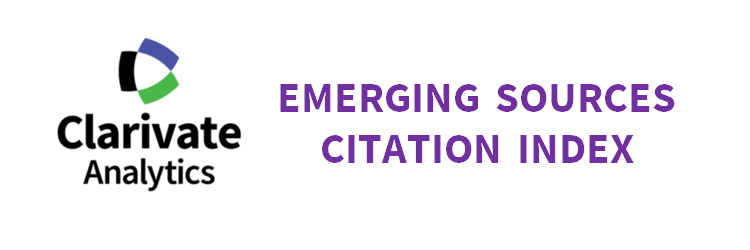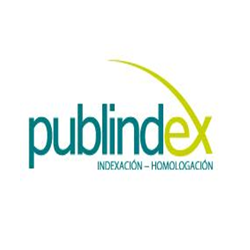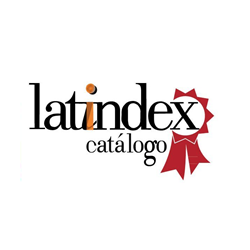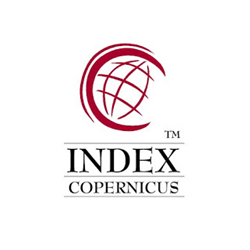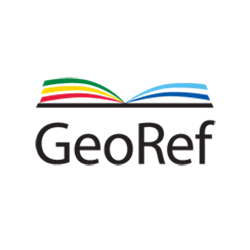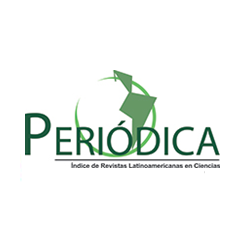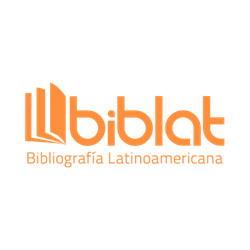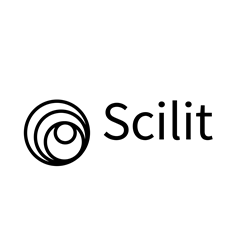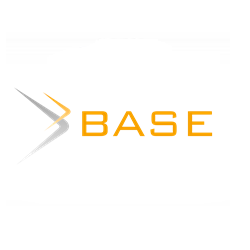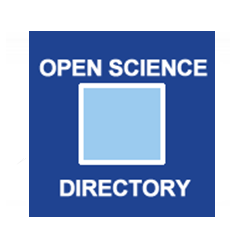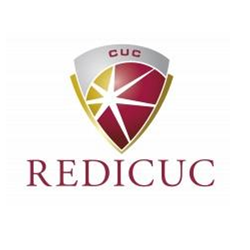Innovation capability model for higher education institutions
DOI:
https://doi.org/10.17981/ingecuc.14.1.2018.8Keywords:
Innovation, Organizational capabilities, Transfer of knowledge, UniversityAbstract
Introduction: This article is based on the interest of configuring tools to diagnose capacities and reference the needs and different criteria to integrate resources and routines so that Higher Education Institutions achieve systemic innovation objectives as a result of the strategic and operative management of capacities for the creation and dissemination of knowledge. For this reason, this article sets forth the approximation to a categorization model of innovation capacity indicators for Higher Education Institutions. It also concerns about its relationship with knowledge transfer processes based on the generation and classification of indicators regarding the resources and necessary routines to manage this transference. All this to influence business development from a knowledge management perspective.
Objective: The purpose of this paper is to design a rubric model based on criteria and indicators to facilitate the evaluation of innovation capacities in Higher Education Institutions.
Methodology: The development of the project used a documentary qualitative method of descriptive character in which the following phases were defined: Search for sources and bibliographic data to support the methodology developed; analysis of studies conducted by authors on measurement models and their results to weigh the indicators that were required to analyze the capacities proposed by the functional approach of innovation capabilities; and finally, ponder resources and routines to present a diagnostic scheme of innovation capabilities in two Higher Education Institutions.
Results: The results lead to the analysis of innovation dynamics in Higher Education Institutions under a model of innovation capabilities.
Conclusions: The identification and adequate management of innovation capabilities will allow obtaining the necessary competitive advantages for organizational sustainability, differentiation, and strengthening of the university-company relationship.
Downloads
References
[2] C. Gunasekara, «Reframing the Role of Universities in the Development of Regional Innovation Systems,» Journal of Technology Transfer, vol. 31, pp. 101-113, 2006. https://doi.org/10.1007/s10961-005-5016-4
[3] H. Etzkowitz y L. Leydesdorff, «The triple helix—university–industry– government relations: a laboratory for knowledge-based economic development.,» EASST, pp. 14-19, 1995.
[4] E. K. Huizingh, «Open innovation: State of the art and future perspectives,» Technovation, vol. 31, nº 1, pp. 2-9, 2011. https://doi.org/10.1016/j.technovation.2010.10.002
[5] Rodríguez, H. G., Riveros, H. P., Romero, G. A., & Suárez, R. M., «Una aproximación al Business Intelligence en el ámbito universitario de latinoamérica y su aplicación en el reconocimiento geográfico del territorio,» de XVII Congreso Latino-Iberoamericano de Gestión Tecnológica, México, 2017.
[6] Miller, K., McAdam, M., & McAdam, R., «The changing university business model: a stakeholder perspective,» R&D Management, vol. 44(3), p. 265–287, 2014a. https://doi.org/10.1111/radm.12064
[7] C. Freeman, «Critical Survey: the Economics of Technical Change,» Cambridge Journal of Economics, vol. 18, p. 463–514, 1994. https://doi.org/10.1093/oxfordjournals.cje.a035286
[8] P. Battini, Innovar para ganar, México: Limusa, 1994.
[9] A. Snarch, «La innovación: estrategia del desarrollo empresaria,» de Seminario de formación empresarial, Bogotá D.C., 1998.
[10] P. Drucker, La innovación y el empresario innovador, Barcelona, Espa-a: Edhasa, 1991.
[11] D. J. M. Rodríguez, La dinámica de la innovación tecnológica, Bogotá: Universidad Nacional, 2006.
[12] N. Rosenberg, «The direction of technological change: Inducement mechanisms and focusing devices,» Perspectives on technology, vol. 18, nº 1, pp. 1-24, 1969.
[13] N. Rosenberg, Learning by using. In Inside the black box: Technology and economics, Cambridge: Cambridge University Press, 1978.
[14] W. B. Arthur, «Competing technologies, increasing returns, and lock-in by historical events.,» The Economic Journal, vol. 99, p. 116–31, 1989. https://doi.org/10.2307/2234208
[15] W. Arthur, The nature of technology. What it is and how it evolves., New York: Free Press, 2009.
[16] D. Lane y R. Maxfield, «Foresight, complexity, and strategy. In The economy as an evolving complex system II,» Santa Fe Institute Studies in the Science of Complexity, pp. 1-6, 1997.
[17] R. Stacey, Complexity and creativity in organizations, San Francisco, CA: Berrett-Koehler, 1997.
[18] J. Fonseca, Complexity and Innovation in organizations., Ediciones Routledge: New York, 2002. https://doi.org/10.4324/9780203279267
[19] Lane y R. Maxfield, «Ontological uncertainty and innovation,» Journal of Evolutionary Economics, vol. 15, pp. 3-50, 2005. https://doi.org/10.1007/s00191-004-0227-7
[20] D. Lane, R. Serra, M. Villani y L. Ansaloni, «A theory based dynamical model of innovation processes,» Complexus 2, Vols. %1 de %23-4, p. 177 – 194, 2006.
[21] D. Lane, R. Maxfield, D. Read y S. Van der Leeuw, «From population to organization thinking. In Complexity perspective,» de innovation and social change, Berlin, Springer-Verlag, 2009, p. 11–41.
https://doi.org/10.1007/978-1-4020-9663-1_2
[22] G. Bonifati, «'More Is Different', Exaptation and Uncertainty: Three Foundational Concepts for a Complexity Theory of Innovation,» Economics of Innovation and New Technology, vol. 19, nº 7-8, pp. 743-760, 2010. https://doi.org/10.1080/10438599.2010.511455
[23] S. Johnson, Where good ideas come from : the natural history of innovation, New York: Penguin Group, 2010.
[24] J. S. García y J. R. Velásquez, «Variables para la medición de las capacidades de innovación tecnológica en instituciones de educación superior,» Revista Ciencias Estratégicas, pp. 267 - 284, 2013.
[25] M. Bunge, Ciencia, Técnica y Desarrollo, México: Editorial Hermes, 1998.
[26] C. Federici, «Algunos Apuntes Relativos al Problema de la Investigación,» Trans2 ("Investigación: palingenesia de saberes"), 2002.
[27] C. Hernàndez, «Una Nueva Etapa en la Reforma Académica,» de Transformación Social y Transformación de la Universidad, Las Reformas Académicas de 1965 y 1989, Bogotá D.C., Universidad Nacional de Colombia, 2001.
[28] K. Hafeeza, Y. Zhanga y N. Malak, «Determining key capabilities of a firm using analytic hierarchy process,» International Journal of Production Economics, vol. 76, p. 39–51, 2002. https://doi.org/10.1016/S0925-5273(01)00141-4
[29] G. L. Figueroa, Capacidades dinámicas; la fuente de sostebilidad ante el cambio, Bogotá D.C.: Universidad del rosario, 2013.
[30] M. Gómez, Evolución de las capacidades de innovación en la industria colombiana: Un análisis comparativo de los resultados de las encuestas de innovación de 1996 y 2005(Tesis de maestría no publicada)., Medellín, Antioquia: Universidad Nacional de Colombia, Facultad de Minas, 2011.
[31] J. V. Robledo, C. G. López, W. L. Zapata y J. D. V. Pérez, «Desarrollo de una Metodología de Evaluación de Capacidades de Innovación,» Coyuntura Econòmica, pp. 133-148, 2010.
[32] M. Zollo y S. Winter, «Deliberate Learning and the Evolution of Dynamic Capabilities,» Organization Science, vol. 13, nº 3, p. 339–351, 2002. https://doi.org/10.1287/orsc.13.3.339.2780
[33] K. Eisenhardt y J. Martin, «Dynamic Capabilities: What are they?,» Strategic Management Journal, pp. 1105-1121, 2000.
https://doi.org/10.1002/1097-0266(200010/11)21:10/11<1105::AID-SMJ133>3.0.CO;2-E
[34] J. Robledo y J. Aguilar, «Naturaleza y características de las capacidades de mejoramiento continuo e nnovación en pymes de alimentos.,» XII Seminario Latino-Iberoamericano de Gestión Tecnológica – ALTEC., 2007.
[35] F. E. García y J. E. Navas, «Las capacidades tecnológicas y los resultados empresariales. Un estudio empírico en el sector biotecnológico espa-ol,» Cuadernos de Economía y Dirección de la Empresas, vol. 32, pp. 177-210, 2007. https://doi.org/10.1016/S1138-5758(07)70095-6
[36] L. Renard y G. Saint-Amant, «Capacité, capacité organization nelleet capacité dynamique: une proposition de définitions,» Les cahiers du Management Technologique, vol. 13, nº 1, pp. 43-56, 2003.
[37] C. Zott, «"Dynamic capabilities and the emergence of intraindustry differential firm performance: Insights from a simulation study,» Strategic Management Journal, vol. 24, pp. 97-125, 2003.
https://doi.org/10.1002/smj.288
[38] R. Grant, Contemporary strategy analysis. Tex and cases, Cornwall: Wiley, 2010.
[39] D. Lavie, «Capability Reconfiguration: An Analysis of Incumbent Responses to Technological Change,» Academy of Management Review, vol. 31, nº 1, pp. 153-174, 2006. https://doi.org/10.5465/amr.2006.19379629
[40] C. Oliver y I. Holzinger, «The Effectiveness of Strategic Political,» Academy of Management journal, vol. 33, nº 2, pp. 496-520, 2008.
[41] C. Wang y P. Ahmed, «"Dynamic Capabilities: A Review and Research Agenda,» International Journal of Management Reviews, vol. 9, nº 1, pp. 31-51, 2007. https://doi.org/10.1111/j.1468-2370.2007.00201.x
[42] E. Danneels, «Organizational Antecedents of Second-Order Competences,» Strategic Management Journal, vol. 29, nº 5, pp. 519-543, 2008. https://doi.org/10.1002/smj.684
[43] G. E. A. Henao, G. M. López y M. R. Garcés, «Medición de capacidades en investigación e innovación en instituciones de educación superior: una mirada desde el enfoque de las capacidades dinámicas,» Entramado, vol. 10, nº 1, pp. 252-271, 2014.
[44] P. Adler, B. Goldoftas y D. Levine, «Flexibility versus efficiency? A case study of model change overs in the Toyota productions system,» Organization Science, vol. 10, pp. 43-68, 1998. https://doi.org/10.1287/orsc.10.1.43
[45] C. Baden- Fuller y H. Volberda, «Strategic renewal: How large complex organizations prepare for the future,» International Studies of Management & Organization, vol. 27, pp. 95-120, 1997. https://doi.org/10.1080/00208825.1997.11656709
[46] D. J. Teece, «Explicating dynamic capabilities: the nature and microfoundations of (sustainable) enterprise performance,» Strategic management journal, vol. 28, nº 13, pp. 1319-1350, 2007. https://doi.org/10.1002/smj.640
[47] S. A. Zahra y A. Nielsen, «"Sources of capabilities, integration and technology commercialization,» Strategic Management Journal, vol. 23, pp. 377-398, 2002. https://doi.org/10.1002/smj.229
[48] K. Sund, Understanding strategy, Londres: Midlesex University, 2012.
[49] S. Lall, «Technological Capabilities and Industrialization,» World Development, vol. 20, nº 2, pp. 165-186, 1992. https://doi.org/10.1016/0305-750X(92)90097-F
[50] C.-H. Wan, I.-Y. Lu y C.-B. Chen, «Evaluating firm technological innovation capability under uncertainty,» Technovation, vol. 28, pp. 349-363, 2008. https://doi.org/10.1016/j.technovation.2007.10.007
[51] L. Domínguez y F. Brown, «Medición de capacidades tecnológicas en la industria Mexica,» Revista de la Cepal, vol. 83, pp. 135-151, 2004.
[52] M. A. Peteraf, « The cornerstones of competitive advantage: a resource‐based view,» Strategic management journal, vol. 14, nº 3, pp. 179-191, 1993. https://doi.org/10.1002/smj.4250140303
[53] S. L. Hart, «A natural-resource-based view of the firm,» Academy of management review, vol. 20, nº 4, pp. 986-1014, 1995. https://doi.org/10.5465/amr.1995.9512280033
[54] J. B. Barney, «Resource-based theories of competitive advantage: A ten-year retrospective on the resource-based view,» Journal of management, vol. 27, nº 6, pp. 643-650, 2001. https://doi.org/10.1177/014920630102700602
[55] J. M. Azagra, F. Archontakis, A. Gutiérrez y I. Fernández, «Faculty Support for the Objectives of University ndustry Relations versus Degree of R&D Cooperation: The Importance of Regional Absorptive Capacity,» Research Policy, vol. 35, nº 1, p. 37–55, 2005. https://doi.org/10.1016/j.respol.2005.08.007
[56] C. M. Christensen, «Making Strategy: Learning by Doing,» Harvard Business Review, vol. 75, nº 6, pp. 141-156, 1997.
[57] G. Cheng, R. Yam, C. Mok y N. & Ma, «A study of the relationship between competitiveness and technological innovation capability based on DEA models,» European Journal of Operational Research, vol. 170, p. 971–986, 2006. https://doi.org/10.1016/j.ejor.2004.07.054
[58] P. Adler y A. Shenbar, «Adapting your Technological Base: The Organizational Challenge,» Sloan Management Review, vol. 32, nº 1, p. 25–37, 1990.
[59] R. C. Yam, W. Lo, E. P. Y. Tang y A. K. Lau, «Analysis of sources of innovation, technological innovation capabilities, and performance: An empirical study of Hong Kong manufacturing industries.,» Research Policy, vol. 40, pp. 391-402, 2011. https://doi.org/10.1016/j.respol.2010.10.013
[60] R. Yam, J. Guan, K. Pun y E. Tang, «An audit of technological innovation capabilities in Chinese firms: some empirical finding in Beijing, China.,» Research Policy, vol. 33, nº 8, pp. 1123-1140, 2004.
https://doi.org/10.1016/j.respol.2004.05.004
[61] Robledo, J., Gómez, F., & Restrepo, J., «Relación entre Capacidades de Innovación Tecnológica y desempe-o empresarial en Colombia.,» Memorias del Primer Congreso Internacional de Gestión Tecnológica e Innovación., p. 21, 2008.
[62] J. Aguirre y J. Robledo, «Evaluación de capacidades de innovación tecnológica en la industria colombiana de software utilizando lógica difusa, Gestión de las capacidades de innovación tecnológica para la competitividad de las empresas antioque-as de software,» Todográficas, pp. 95-120, 2010.
[63] I. Kocoglu, S. Z. Zeki Imamoglu y H. I. Keskin, «Learning, R&D and Manufacturing Capabilities as Determinants of Technological Learning: Enhancing Innovation and Firm Performance,» Procedia - Social and Behavioral Sciences, vol. 58, nº 12, pp. 842-852, 2012.
https://doi.org/10.1016/j.sbspro.2012.09.1062
[64] A. Rodríguez Castellanos y J. Landeta Rodríguez, «apacidad empresarial para la absorción de I+D ecterna: el caso de Bizkaia,» Cuadernos de Gestión, vol. 4, nº 1, pp. 11-34, 2004.
[65] G. J. Serrano y V. J. Robledo, «Variables para la medición de las capacidades de innovación tecnológica en instituciones de educación superior,» Revista Ciencias Estratégicas, pp. 267 - 284, 2013.
[66] J. Guan y N. Ma, «Innovative capability and export perfomance of Chinese firms,» Technovation, vol. 23, nº 9, pp. 737-747, 2003.
https://doi.org/10.1016/S0166-4972(02)00013-5
[67] O. Osorio García, J. Quintero y J. Arias, «Capacidades de innovación, desempe-o innovador y desempe-o organizacional en empresas del sector servicios,» Cuadernos de administración servicios organizacionales, vol. 27, nº 49, pp. 87-108, 2014.
[68] V. Barrales, F. Martínez y J. C. Gázquez, «Dynamic Marketing Capabilities: Toward an Integrative Framework,» International Journal of Management Reviews, pp. 1-20, 2013.
[69] K. Barrios Hernández, E. Olivero Vega y J. C. Acosta-Prado, «Capacidad dinámica de innovación en instituciones de educación superior,» Revista Espacios, vol. 38, nº 01, p. 24, 2017.
[70] F. Hernández Silva y Y. Martí Lahera, «Conocimiento organizacional: la gestión de los recursos y el capital humano,» Acimed, vol. 14, nº 1, 2006.
[71] J. Céspedes Llorente, P. Jerez Gómez y R. Valle Cabrera, «Las prácticas de RecursosHumanos de Alto Rendimiento y la capacidad de aprendizajeorganizativo: incidenciae implicaciones,» Cuadernos de Economía y Dirección de la Empresa, nº 24, pp. 29-56, 2005.
[72] E. Rasmussen y O. J. Borch, «University capabilities in facilitating entrepreneurship: A longitudinal study of spin-off ventures at mid-range universities,» Research Policy, vol. 39, nº 5, pp. 602-612, 2010.
https://doi.org/10.1016/j.respol.2010.02.002
[73] R. Amit y P. J. H. Schoemaker, «Strategic assets and organizational rent,» Strategic Management Journal, vol. 14, nº 1, pp. 33-46, 1993. https://doi.org/10.1002/smj.4250140105
[74] B. Pulido, «Teoría de los recursos y capacidades: el foco estratégico centrado en el interior de la organización,» Sotavento MBA, vol. 15, p. 54–61., 2010.
[75] J. Suárez Hernández y S. Ibarra Mirón, «La teoría de los recursos y las capacidades: un enfoque actual en la estrategia empresarial,» Anales de estudios económicos y empresariales, vol. 15, pp. 63-89, 2002.
[76] C. Froehlich, C. C. Bitencourt y M. Bonzanini Bossle, «The use of dynamic capabilities to boost innovation in a Brazilian Chemical Company,» Revista de Administração, vol. 52, nº 4, pp. 479-491, 2017. https://doi.org/10.1016/j.rausp.2017.08.007
[77] J. C. Acosta Prado, M. Longo-Somoza y A. L. Fisher, «Capacidades dinámicas y gestión del conocimiento en nuevas empresas de base tecnológica.,» Cuadernos de Administración, vol. 26, nº 47, pp. 35-62, 2013.
[78] Campbell, A. & Nash, L., A sense of mission, Addison Wesley, 1992.
[79] Grant, R. M., Corporate strategy: managing scope and strategy content., Londres: Handbook of strategy and management, 2002.
[80] Porter, M. E., Competitive strategy, Nueva York: Free Press, 1980.
[81] Rodríguez- Ponce E., «Gestión del conocimiento y eficacia en las organizaciones: Un estudio empírico en organizaciones públicas.,» Interciencia., vol. 32, pp. 820-826, 2007.
[82] V. Flores, R. Palavecino y G. Montejano, «Desarrollo de un Sistema de soporte a la Toma de Decisiones basado en indicadores de capital intelectual en el contexto de la investigación universitaria,» de 2 Congreso Nacional de Ingeniería Informática - Sistemas de información, San Luis Argentina, 2013.
[83] M. A. G. Hernández, «Acerca de la gestión estratégica de la investigación: elementos para un marco conceptual,» Investigación y reflexión, vol. 13, nº 2, pp. 24-43, 2005.
[84] J. Guan, R. Yam, C. Mok y N. Ma, «A study of the relationship between competitiveness and technological innovation capability based on DEA models,» European Journal of Operational Research, vol. 170, pp. 971-986, 2006. https://doi.org/10.1016/j.ejor.2004.07.054
[85] C. Freeman, La teoría económica de la innovación industrial, Madrid, Espa-a: Alianza, 1974.
Downloads
Additional Files
Published
How to Cite
Issue
Section
License
Published papers are the exclusive responsibility of their authors and do not necessary reflect the opinions of the editorial committee.
INGE CUC Journal respects the moral rights of its authors, whom must cede the editorial committee the patrimonial rights of the published material. In turn, the authors inform that the current work is unpublished and has not been previously published.
All articles are licensed under a Creative Commons Attribution-NonCommercial-NoDerivatives 4.0 International License.

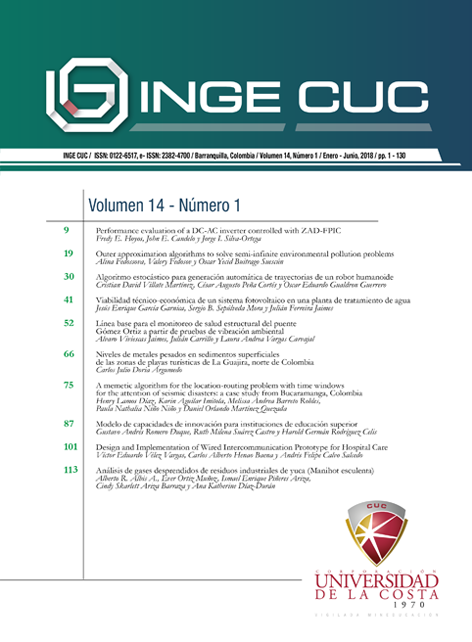

 English
English
 Español (España)
Español (España)
